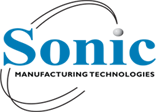
What to Expect from the Rigid Flex PCB Prototyping Process
Rigid flex printed circuit boards (PCBs) combine the flexibility of flex circuits with the traditional board functionality of rigid circuits. The end result is a PCB that’s remains flat and stiff where structure is needed, and flexible at others, allowing the board to be folded or flexed to fit into the device.
If you’re having a rigid flex PCB created for a specific application, you’ll be pleasantly surprised by the customization options that are available. Rigid flex PCBs can be designed and assembled to fit a variety of configurations, flexibilities, rigidities and sizes.
To prevent the flex PCBs from causing issues with the equipment they’re installed into, it’s extremely important that they are rigorously tested. This is why prototyping is an important part of the process.
Let’s learn more about the rigid flex PCB prototyping process and what you can expect on the consumer-side of things.
What is a Prototype?
A prototype is a sample of a product created to test something. In this case, a prototype allows PCB manufacturers to test the functionality, performance and quality of a rigid flex PCB in a particular application. These evaluations will determine if modifications need to be made to comply with certain specifications and standards. At Sonic Manufacturing, we create our electronic prototypes on our production floor with production equipment and flow. This way, we ensure the final design can be manufactured in production quantities.
The benefits of creating a prototype are:
- Identify design problems early on
- Estimate production costs, manufacturing times and so forth
- Test to determine fit and durability
- Gather feedback from the client
- Determine final function and design
How the Rigid Flex PCB Prototyping Process Works
While each project is unique, you can expect the rigid flex PCB prototyping process to involve the following steps:
- Initial design. The first stage brings together engineers who will help create an initial design based on your specifications and requirements. Providing our engineering team with as much information as possible is helpful!
- Design review. Once our engineering team has put together the design, they’ll review it for manufacturability. An important part of this review is thinking about the failures that could happen during the manufacturing process.
- Customer follow-up. When the design is approved, the team will bring the design to you. Here, we can address any questions or concerns and add any elements that you may want.
Even though prototyping does make the process initially slower, it’s cheaper and easier to make changes during the prototyping stage as opposed to the production stage. Usually, Sonic Manufacturing has this process nailed down to just 10 days or less. Get in touch with us today to discuss your needs for rigid flex printed circuit boards.
CALL FOR A QUOTE
(510) 580-8500
OR EMAIL:
Sales@Sonicmfg.com
